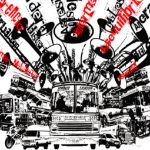Noise is considered today as one of the main sources of environmental pollution and a health problem worldwide. In some contexts, the invisible agent is named because its intangibility even leads to the failure to establish a causal relationship between the discomfort felt in a certain place and exposure to high-decibel sounds.
The World Health Organization (WHO) aims to recall that although acoustics is a type of pollution that does not accumulate or transfer, it has a very strong impact on the quality of life and therefore on people’s health. If noise is not adequately controlled, it is one of the most widespread and increasing problems, and many times not even the laws of the countries are capable of addressing the phenomenon properly.
In Cuba the phenomenon of noise pollution moves in a reality that ranges from problems of technological obsolescence to social indiscipline that more than one has tried to equate with a facet of our idiosyncrasy.
There is a wide regulatory apparatus, just to mention a few, among the legal regulations are Law 81 of the Environment, Decree Law 141/1988, the Road and Civil Safety codes, and Decree Law 200 of 1999.
In addition, since 2015, at the request of the Government, commissions to combat noise pollution were created at all levels, in charge of establishing action plans to diagnose emission sources and proceed to their management or eradication, as well as education of the citizenship.
Since then and to date, complaints to the competent authorities have multiplied (although the lack of specialized equipment such as sound level meters makes their control work more difficult), the investment process and land use planning have been intended in this sense and the perception of risk has grown among the population; but in the same way the vulnerabilities for the proliferation of acoustic damage grow.





